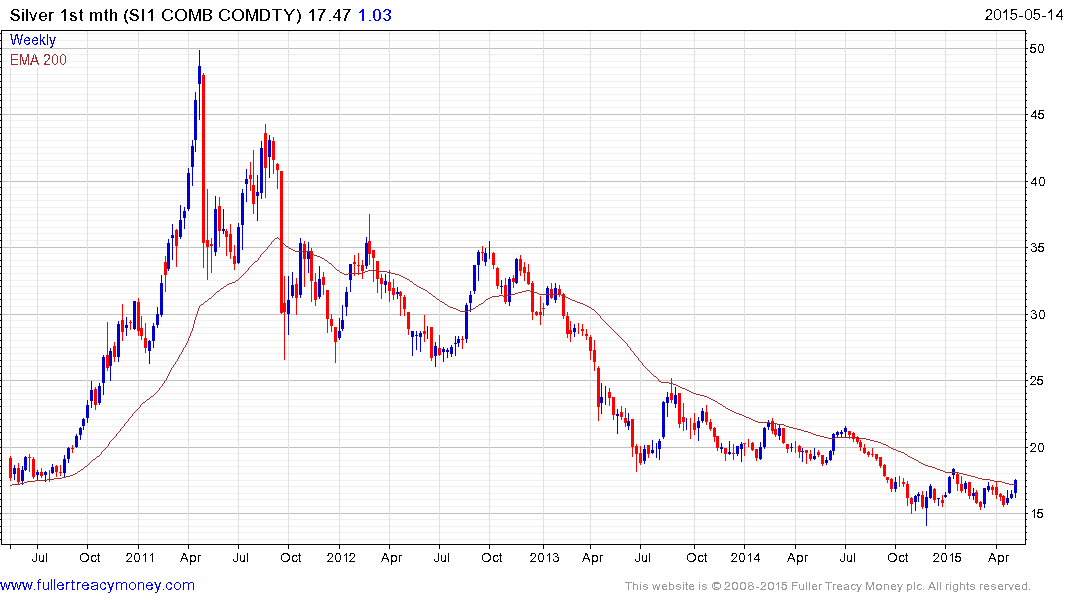Solar and Silver
David posted an article from the Telegraph on Monday highlighting the role silver plays as a conductor in solar cells. Considering the fact that silver suffered from a loss of demand with the demise of photographic film, the potential for growth in another industrial sector is a potentially important bullish catalyst. In order to gain some additional perspective on just how much of a growth sector this might represent for sliver there are two key considerations. The first is demand growth projections which are bullish and second the capacity for technological innovation which is potentially bearish.
This additional article from the Motley Fool was reprinted in USA Today last August and makes many of the same points as the Telegraph article. Conventional solar cells which continue to represent the majority of sales all use silver. As manufacturing costs come down, the time till payback on the investment in the cells improves and demand is rising. It is on this argument the bullish case for silver rests.
This article from UnderstandingNano.com represents a challenge to the bullish argument. Here is a section:
Researchers at Princeton University have developed a solar cell that almost eliminates losses due to reflection of light. They use a 30 nanometer thick gold nanomesh (a layer with a regular pattern of 175 nanometer diameter holes) along with an active layer thinner than the wavelength of light. They found that this combination traps most of the light in the solar cell, increasing the efficiency of the cell.
Researchers at Duke University are developing another method to reduce losses due to the reflection of light. In this method the combination of silver nanocubes scattered over a thin gold layer reduce losses due to reflection.
Researchers at the Nies Bohr Institute have determined that sunlight can be concentrated in nanowires due to a resonance effect. This effect can result in more efficient solar cells, allowing more of the energy from the sun to be converted to electricity.
An inexpensive solar cell designed to produce hydrogen is being developed using iron oxide nanoparticles.
Combining silver nanowires, titanium dioixde nanoparticles and a polymer that absorbs infrared light to make a solar cell that is about 70 percent transparent to visible light, allowing it to be used in windows.
This article highlights that there are a considerable number of competing technologies that are all seeking to significantly improve the efficiency of solar cells. The full commercialisation of these technologies is still a number of years away but when it happens they are likely to displace the current. Additionally they will in all likelihood need less silver, gold, copper or iron than are used in the current market.

Silver, of course, has other attractive characteristics. It has been ranging mostly above $15 since October and is now testing the region of the 200-day MA and the medium-term progression of lower rally highs. A clear downward dynamic would be required to question potential for additional higher to lateral ranging.


